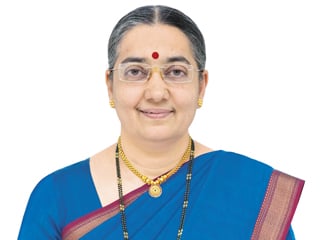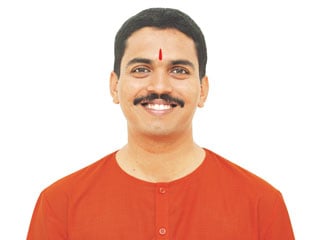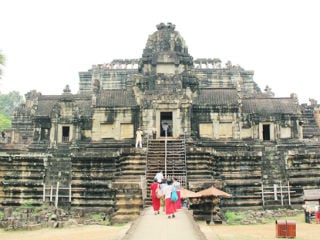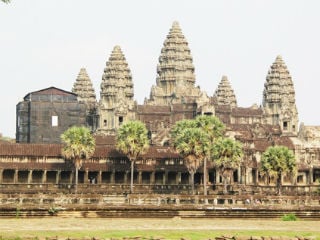The land which was referenced as Kambhoj country in Mahabharat, is todays Cambodia! Hindus resided here till 15th century. It is said that Hindu empire by the name Khmer ruled Cambodia from 802 AD till 1421 AD. In reality, Kambhoj region was Sage Koudinya’s area. Also, Kambhoj region was also a region of Nagas. As per references available, the King of Kambhoj had also participated in the war of Mahabharat. Being a region of Nagas, this is also the region of Deity Shiva and it is said that Shrivishnu’s vehicle Garud resides on the Mahendra mountain. Therefore this is also a region of Shrivishnu. This article details few highlights of the study tour conducted by Sadguru Mrs. Anjali Gadgil and 4 student seekers of Maharshi Adhyatma University, in this Kambhoj country, the region of Harihar.


1. King Jayavarman VII established Jayagiri town behind Angkor Wat, and at its centre built the Bayon temple
On 28th March, we visited Angkor Thom temple area which is situated at the backside of Angkor Wat temple. Although Angkor Thom temple is small in size, its area is 9 times bigger than that of Angkor Wat temple. King Jayavarman VII initiated the construction of this temple at the end of 12th century and King Jayavarman VIII completed it in the beginning of 13th century. King Jayavarman VII married a Buddhist princess. He established a huge township behind the Hindu temple of Angkor Wat and named it as Jayagiri. In the centre of the township, the King built a temple symbolizing Buddhist and Hindu religions and named it as Bayon temple.
2. Meaning of ‘Bayon’, and 49 faces of Buddha carved on the temple

‘Bayon’ means ‘Enlightenment’. Buddha is said to have attained enlightenment under the Banyan tree on the 49th day. Therefore this temple bears 49 faces of Buddha. The guide accompanying us told us that, earlier there were 3 types of faces in the carvings and the temple had 5 peaks. The peaks also had faces of Buddha carved on them. Therefore it is said that in total there were 54 faces of Buddha carved on the temple. During churning of the ocean, 54 Deities and 54 demons had participated together. It could be possible that the 54 faces of Buddha were carved on the temple to symbolize this, or it is also said that Buddha (Bodhisattva) had taken 54 incarnations and the carvings could also symbolize this.
3. Circular shape of temple and top of the temple bearing huge stone carvings with face of Buddha facing towards all the four directions
Currently this temple is in ruins and is in dilapidated form. It is being rebuilt using the existing stones. Our guide told that inside the temple there was a South library in the Southeast side and North library in the Northeast side. There are some sculptures carved in the outer courtyard of the temple. Once inside the temple, you have to climb a few steps to reach the main sanctum sanctorum. There is a Shiva temple at that place. The temple is circular. It feels as if Buddha’s faces carved on the huge stones on top of the temple are looking in all the four directions (look at the picture above). As per few historians, the architecture of Bayon temple might be based on Shree Yantra.
– Shri Vinayak Shanbhag, Cambodia

 In spite of presently being a Buddhist nation, traditional folk dance ‘Apsara Nrutya’ of Cambodia...
In spite of presently being a Buddhist nation, traditional folk dance ‘Apsara Nrutya’ of Cambodia... During war, Cambodian kings provided sacred threads to soldiers for their protection
During war, Cambodian kings provided sacred threads to soldiers for their protection Ta Prohm temple, Cambodia built by King Jayavarman VII for his mother at the end...
Ta Prohm temple, Cambodia built by King Jayavarman VII for his mother at the end... Banteay Srei : The Deity Shiva temple in Phnom Dei village, Cambodia
Banteay Srei : The Deity Shiva temple in Phnom Dei village, Cambodia Bapun temple built by King Udayadityavarman II of Yashodharpura
Bapun temple built by King Udayadityavarman II of Yashodharpura Angkor Wat : World’s largest Hindu temple built by King Suryavarman II in Cambodia
Angkor Wat : World’s largest Hindu temple built by King Suryavarman II in Cambodia